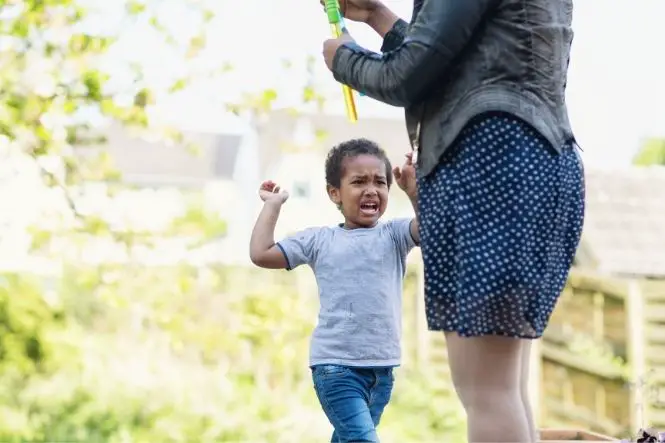Children may hit others for a variety of reasons in order to gain attention and possibly even to self-soothe. Adults should take note of when and where children tend to hit others, as well as who the children hit, in order to get clues about why this behaviour may be occurring. Disciplining children who hit immediately following the behaviour is usually the best course of action to nip such behaviour in the bud.
Find a Pattern
If adults look closely enough there may be a pattern that emerges from children who suddenly decide to start hitting. Where hitting occurs may be a clue to the emotional state a particular setting provokes in a child. For example, if a child hits only while at the nursery there is likely something in that location that is upsetting the child. When hitting occurs may also tell adults more about the child’s state of mind when (s)he engages in this behaviour. For example, if a child only hits when (s)he is clearly tired then the behaviour may simply be due to frustration or even confusion. Who the child hits may also be very telling. Children who hit other children often due so out of aggression, while children who hit their parents or other adults tend to do so because they are looking for attention or trying to test the limits. Children may also hit themselves, which can be incredibly upsetting for adults to watch. Sometimes self-hitting may be a child’s method of self-soothing, but if this behaviour continues and/or puts the child’s own health at risk then getting an expert opinion is a good idea.
Discipline Immediately
Regardless of why children hit others, these episodes should be immediately followed by a method of discipline in order to teach children that this behaviour is inappropriate. Parents should give their child a clear warning and stating “No hitting!” when the behaviour does occur, and children who do not heed this warning should be removed from their activities immediately. Putting a child on the Naughty Step or in Time Out are options that allow the child time to reflect on his or her hitting and at the same time regain control of themselves. Before being allowed back to their activities children should apologise to those who were hit and they should also be able to explain to a parent or other adult why hitting is wrong.
Discipline Consistently
Even if a child hits others frequently (s)he should be disciplined each time the behaviour occurs. Saving discipline until a number of different behaviours are included, or saving discipline until later if the hitting occurred in public, risks both the child and the adult forgetting why (s)he is being disciplined. This means that the message that hitting is inappropriate may be lost. However, children who hit others should never be disciplined by being hit, smacked or swatted. Not only does this mix the message that hitting is inappropriate, but it may also actually reinforce the behaviour since children may remember that they were hit so it still must be fine to do the same to others. Non-physical discipline, rather than physical punishment, is the aim in order to help children stop hitting.


